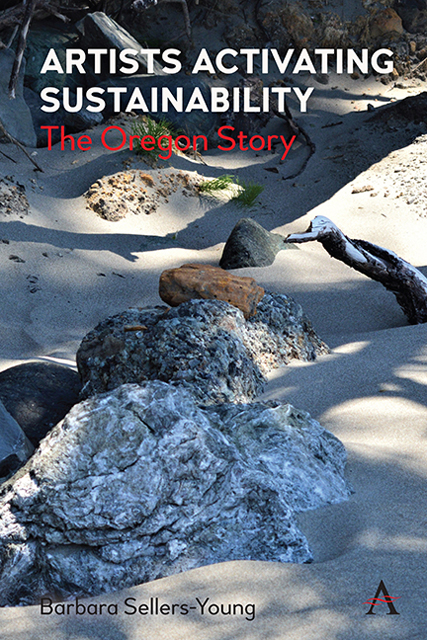Book contents
- Frontmatter
- Dedication
- Contents
- Acknowledgments
- List of Figures
- Introduction: Art, Environment and Metaphor
- 1 Environmental Activism, Arts and the Land of Eden Landscape One: High Desert Basin and Range
- Landscape One High Desert Basin and Range
- Landscape Two Columbia Gorge and Plateau
- Landscape Three Cascade Range
- Landscape Four The Willamette Valley
- Landscape Five Rogue River Valley
- Landscape Six Oregon Coast and Coast Range
- Index
11 - Astoria’s FisherPoets
Published online by Cambridge University Press: 10 January 2023
- Frontmatter
- Dedication
- Contents
- Acknowledgments
- List of Figures
- Introduction: Art, Environment and Metaphor
- 1 Environmental Activism, Arts and the Land of Eden Landscape One: High Desert Basin and Range
- Landscape One High Desert Basin and Range
- Landscape Two Columbia Gorge and Plateau
- Landscape Three Cascade Range
- Landscape Four The Willamette Valley
- Landscape Five Rogue River Valley
- Landscape Six Oregon Coast and Coast Range
- Index
Summary
Astoria is surrounded by the beauty of the forest, mountains, three rivers and the sea. Because of its steep hills and beautiful Victorian homes, Astoria has been called the Little San Francisco of the Pacific Northwest.
Astoria Chamber of CommerceThe February day is cold and windy. My car's window washers try to keep up with the driving rain that makes visibility uncertain. I stay focused on the road ahead of me as I drive along the coast highway toward Astoria, Oregon's first city and home of the FisherPoets festival. From the warmth of my car, I am reminded of Lewis and Clark's response to Oregon's northwestern coast during their winter encampment of 1805–06. Lewis and Clark and the 33 members of the Corps of Discovery lived in 50’ × 50’ Fort Clatsop (named for the Clatsop tribe) located near today's Astoria and surrounded by the forests and wetlands of the Youngs River estuary. Unlike the Clatsop, who were in their clothing style and longhouses adapted to the climate, the men of the Corps of Discovery got sick from the constant cold and wet. Lewis had intended to stay at Fort Clatsop until April but decided to leave early “to get out of the place” as the men were increasingly physically and emotionally debilitated by the climate.
Fur trader John Jacob Astor's expeditions (for which Astoria is named) had a similar experience. In order to expand the reach of his American Fur Company, Astor sent expeditions by ship and land to set up a site at the mouth of the Columbia River. His ship the Tonquin, captained by Jonathan Thorn, arrived in the spring of 1811. Once landed, they built, despite the rain and mud, Fort Astoria, on a hill overlooking the estuary of the Young and the Columbia Rivers. This was the first American settlement in the Oregon Country. Notwithstanding an adequate supply of food from the abundance of fish, deer, elk and root vegetables that were often supplied with help from the Clatsop, the men were so depressed by the constant rain that three of them deserted thinking they would escape to the Spanish missions a thousand miles to the south.
- Type
- Chapter
- Information
- Artists Activating SustainabilityThe Oregon Story, pp. 189 - 200Publisher: Anthem PressPrint publication year: 2022

